Beaudry Tallgrass Prairie Restoration: Assessment and Management Recommendations (2003)
By A.L. Knispel and S.M. Mclachlan, Ph.D
Alexis Knispel received her Bachelor degree in Ecology and English at the University of Manitoba in 2003. She has worked as a park interpreter in Manitoba's provincial parks, and in 2002 worked with Dr. Stéphane McLachlan to assess the success of the Beaudry Provincial Park Tallgrass Prairie Restoration. Alexis is currently working on her Ph.D. with Dr. McLachlan in the Environmental Conservation Lab at the University of Manitoba. Her current research examines the potential environmental and agronomic impacts of feral volunteer canola in roadside habitats in Manitoba.
Dr. Stéphane McLachlan is an Associate Professor in the Department of Environment and Geography at the University of Manitoba. He is always looking to partner with highly motivated and community-minded undergraduate and graduate students as well as post-docs interested in environmental conservation, ecological restoration, and the interface between human and biophysical systems.
Introduction
Tallgrass prairie once dominated the North American Midwest. Since settlement, it has been reduced to less than 1% of its original extent, initially by agricultural conversion and, more recently, by urban development. What remains is often degraded by agricultural inputs and exotic species, as well as by continued encroachment by woody vegetation (Sveinson 2003). Many of these changes in plant community composition are associated with reductions in burning and grazing, which historically acted to maintain these high diversity temperate ecosystems (Hartnett & Fay 1998). Much effort is now being expended in preserving what little habitat remains. Two notable examples of high quality extant prairie are the Manitoba Tallgrass Prairie Preserve, an area that was too wet and rocky to be successfully converted to agricultural use, and the St Charles’ Rifle Range, an area maintained by military activity. In addition, the Living Prairie Museum in Winnipeg preserves 40 acres of largely undisturbed prairie, previously hayed, but never cultivated. Preservation is clearly an important activity, but most prairie remnants continue to decline in quality.
Ecological restoration has emerged as an important tool in mitigating declines in both size and quality of tallgrass prairie (Hobbs & Norton 1996). Restoration, “the process of assisting the recovery of an ecosystem that has been degraded, damaged, or destroyed” (SER 2002), can involve the rehabilitation of degraded habitat or, increasingly, the reconstruction of new habitat. Reconstruction generally requires a change in land use, whereby entirely new habitats are created on former agricultural and derelict urban sites previously devoid of vegetation. In the context of continued habitat loss, the increasing interest in reconstructing prairie habitat has become an assertion of the desire to reverse current trends, and an attempt to rediscover a native landscape.
Despite their value, both ecological and social, restoration activities tend to be input-intensive and costly. Undesirable and often exotic vegetation cover must be removed, usually by the application of broad-spectrum herbicides and repeated tilling (Morgan et al. 1995). Once the weed-dominated propagule banks are thought to be exhausted, sites are seeded with native grass and forbs. Subsequent vegetation management often involves the removal of any emerging exotic species, usually through repeated spot-spraying of herbicides, mowing, and prescribed burning (Morgan et al. 1995). Extensive monitoring is generally recommended in prairie restoration, thereby allowing for site-specific modification or adaptation of management techniques. However, this is rarely conducted on a formal basis (Sveinson 2003). It is clear that most managers have a good sense of the problems that confront them, and this experience-based knowledge should not be discounted. However, funders and policy-makers often require formal science-based evidence that restoration is successful. Few extensive monitoring programs have been developed for any natural habitat in Manitoba. Those in practice now are either too coarse to be appropriate for restored areas or too resource-demanding to be conducted on a regular basis. Without effective monitoring and formal data collection, it is difficult to gauge or communicate the success of restoration, or to adapt management practices to maximize project success, issues that continue to plague this new discipline (McLachlan & Bazely 2003). Simply put, there is remarkably little publicly available information that attests to the outcomes of this important activity.
Methods
In 1986, Manitoba Conservation initiated a long-term tallgrass prairie restoration project in Beaudry Provincial Park. From 1987 to 1999, sequential sections of previously cultivated land were restored, and currently the restoration is 300 acres in size. The use of a variety of seeding, burning and weed control “best management” practices has resulted in a high-visibility restoration showpiece, the largest of its kind in Canada. However, the success of this restoration activity has never been formally assessed. In 2002, we initiated a “retroactive” assessment of the prairie restoration practices in Beaudry Park. Our objectives were to i) assess the status of both above-ground and propagule bank components of the restored prairie and ii) to make management recommendations regarding future restoration and any associated monitoring activity. Nine restoration “sites” were selected according to age class: three restored from 1987-1990, three restored from 1991-1995, and three restored from 1995-1999. In addition, three high-quality prairie remnants were selected as reference sites, two located at Beaudry Park and the third at the Living Prairie Museum in nearby Winnipeg. A neighbouring agricultural field was also selected as an “anti-reference” site. Vegetation and propagule banks were sampled in all sites.
Results
Generally, restoration is having a substantial and desirable effect on plant community composition in the above-ground vegetation. While restored sites remain distinct from reference sites (Plate 1), the latter show important changes from the agricultural anti-reference site. In addition, new and old restored sites (Plate 2 & Plate 3 respectively) support different species, indicating that the restored sites are changing over time. Species characterizing reference sites include purple prairie clover, sideoats grama, northern bedstraw, and wild strawberry, as well as woody species leadplant and wolf willow. Native species associated with the older restorations include Canada anemone, black-eyed susan, white cinquefoil and giant blue hyssop, while younger restorations were characterized by natives Canada wild rye and little bluestem. Despite the presence of these native species, restored sites are also associated with undesirable exotic species. Young sites in particular are dominated by invasive species including yellow and white sweet clover and timothy.
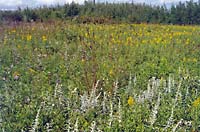
Plate 1: Parks and Natural Areas, Manitoba Conservation [citation]
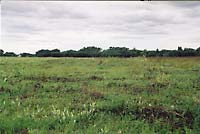
Plate 2: A.L. Knispel [citation]
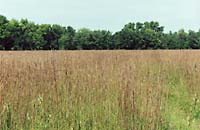
Plate 3: Parks and Natural Areas, Manitoba Conservation [citation]
Many species changed in prevalence in the above-ground vegetation among the restoration classes. Some desirable native species, such as yellow coneflower and Canada wild rye, were more prevalent in new sites and disappeared over time. Wild rye (Plate 4) is deliberately planted as a transitional species that establishes well in new sites, but typically does not remain in restorations (Packard 1997). Other native graminoid (e.g. big bluestem, Plate 5) and forb species (e.g. stiff-leaved goldenrod, Plate 6) increased in prevalence with restoration age. Some exotics, especially graminoids such as smooth brome and Kentucky bluegrass, also increased in prevalence over time. This might suggest that they had been initially reduced by tillage and herbicides prior to seeding but not entirely removed and, thus, were able to re-establish.
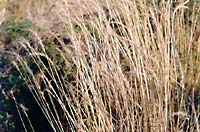
Plate 4: Parks and Natural Areas, Manitoba Conservation [citation]
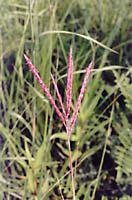
Plate 5: S. Dangerfield [citation]
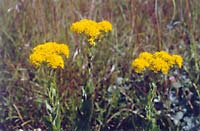
Plate 6: Parks and Natural Areas, Manitoba Conservation [citation]
Diversity also changed substantially with restoration. Diversity was measured as species richness defined as the number of species present, and effective species richness, a proportional measure of diversity that gives more weight to prevalent species. In the above-ground vegetation, overall species richness and effective species richness (ESR) were highest in reference sites and significantly lower in both old and new restoration sites. Interestingly, mid-aged sites were most similar to the reference sites. When examined by origin (native and exotic) and life form (forbs, graminoids, and woody) functional groups, these differences became more apparent. In the above-ground vegetation, native forb species richness and ESR were significantly higher in reference and mid-age restoration sites than in old and new restorations. Native graminoids showed no significant changes in diversity across the restoration chronosequence, while native woody species were significantly more diverse in reference sites. Exotic forb species richness was highest in new and mid-age sites, lower in old sites, and lowest in reference sites. In contrast, exotic graminoid diversity was highest in old restorations.
The impacts of restoration on propagule banks were similar to impacts on above-ground vegetation, although the species associated with particular sites were often different. The propagule bank of reference sites was characterized by native wild mint, white sage, northern bedstraw, and old-witch grass. The agricultural propagule bank was similar to those of new restorations, and these were characterized by exotic redroot pigweed, green foxtail, and hemp nettle. The propagule bank of older restorations included native black-eyed Susan, slough grass and western pygmy flower.
Impacts of restoration on propagule bank diversity were again similar to that of the above-ground vegetation. Overall species richness and ESR were highest in old and mid-age restoration sites. Native forb diversity was highest in reference sites and native graminoid species richness highest in old restorations. Exotic forb species richness and ESR were, again, substantially lower in reference sites and exotic graminoids showed no significant changes.
Discussion
Our results suggest that restoration is having a desirable impact on species composition and diversity at the Beaudry Prairie. However, results also indicate that restoration sites, even those that are old, remain distinct from the reference sites. This is true for both the above-ground vegetation and the propagule bank. After only 12 years, it is unlikely that the species composition of restoration sites would be equivalent to that of reference sites. All restoration sites had formerly been used for agriculture, which typically results in a propagule bank dominated by weeds and the dominant crops. In contrast, reference sites may have been standing prairie for centuries. It is important, however, to appreciate that time-since-restoration is having an effect on both the vegetation and propagule bank, as old restorations are also distinct from those that are new. Moreover, old restoration sites are closer in species composition to the reference sites than are the new restorations, indicating that they are becoming more similar to reference sites over time. In large part, this desirable shift in species composition is due to the decline of weedy species normally associated with recent disturbance. However, the similarity of the agricultural and new restoration propagule banks indicates that a large weed bank will remain viable throughout the first few years of restoration activities. This may perhaps necessitate more aggressive weed management in the first years of restoration.
The suppression of exotic species is not the only challenge that must be faced in the management of the Beaudry Prairie. The successful establishment and maintenance of desirable native species in the restorations has also proven demanding. This is particularly true for native forbs. While native forb diversity increased in mid-age sites, it declined again for old sites as some forbs disappeared, potentially due to random events that might eliminate their typically small populations or to management activities. Indeed, some authors have suggested that we are better at restoring grasslands than we are prairies that contain both graminoids and forbs (e.g. Baer et al. 2002, Wilson 2002). Although grasses typically only represent 8% of the seed mix according to species, they often comprise the majority of the mix according to seed weight, as they are generally more available and cheaper than forb seed (Packard 1997). Thus, in 1987, 70% of the seed mix used at Beaudry was made up of grasses by weight. Increasing the forb: grass ratio of mixes will increase the likelihood that forbs will be a substantial component of the restoration (Packard 1997).
Management Implications
Long-term tallgrass prairie restoration at Beaudry has succeeded in establishing desirable vegetation on a former agricultural site. However, continued active management is required to improve the quality of the restoration, both in terms of decreasing exotic presence and increasing native diversity. To achieve these goals, the following management recommendations have been devised.
Tailor seed mixes to site-specific conditions. Recognizing variation in soil and moisture conditions within the restored sites will enable the design of mixes which contain species expected to perform well under specific conditions. Reference sites tend to be characterized by species of moist conditions and by woody species, and the restored sites are characterized by wet areas where currently seeded species have been unable to establish. Adapting the seeding regime to these conditions will likely improve establishment, as will reseeding after burning or after the removal of exotic species.
Increase burn frequency to better manage undesirable woody encroachment and exotics. No restored site has been burned more than three times. Although annual burns will result in declines of native species, sites should be burned more than every five years. Burning to coincide with tiller elongation of problematic exotic graminoids in old restorations will help reduce their presence, while increased burn frequency in new restorations will help decrease the presence of ruderal exotics. Rotating burn season will also aid in managing for optimal native diversity.
Manage buffer zones surrounding the prairie restoration. These are often dominated by exotics and serve as a source of undesirable species in the restoration. Watering, mowing and fertilizing of these buffer zones facilitate the establishment of these exotic species. Seeding native species directly onto the turf of buffer zones may aid in reducing establishment of exotics, and will compensate for a depauperate native propagule bank.
Extend the mowing regime to control exotics and improve native diversity at the restoration. Mowing has been effectively used to control exotics and undesirable woody species, especially when combined with other disturbance regimes. Mowing can also benefit native species, especially low-lying species, by making light more available and releasing them from suppression from competitive grasses. Mowing is also highly acceptable and is easy to conduct whenever the opportunity presents itself.
Increase the use of herbicides at the site level. In general, greater use of both full spectrum and selective herbicides would benefit the restorations. Herbicides could be broadcast on extensive stands of invasive species in new restorations, or could be spot-sprayed on smaller populations in old restorations.
Implement monitoring practices whenever possible. Data are necessary in order to modify or adapt management practices and to communicate findings to other managers. Monitoring may be as simple as establishing permanent photo-points, enabling restorationists to compare community quality from year to year. More intensive monitoring, including vegetation sampling of permanent quadrats, can be beneficial when feasible. Partnerships with universities and other management agencies can be useful in analyzing and compiling the data.
Increase the quality of existing restoration before extending its size. Developing fine-scale mangement practices, improving the diversity of restored areas by introducing new seed mixes, and priorizing the reseeding of young restorations will help improve restoration quality. The high visibility of the entire restoration and its function as an important “best management practices” case study makes it that much more important to maintain the quality of this site.
Acknowledgements
We thank the staff at Manitoba Conservation, without whom this study would not have been feasible. Helios Hernandez and Cathy Hummelt (Parks and Natural Areas) helped guide and provided support for this project. The restoration also benefited from the input of Gary Friesen (Park Operations) and Arnie Berg, whose commitment and long-term vision have been inspiring. We would also like to thank the City of Winnipeg Naturalist Department and the staff at the Living Prairie Museum. An undergraduate NSERC award to A. Knispel and an NSERC operating grant to S. McLachlan also helped fund this project. S. Kwiatkowski provided instrumental field assistance. M. Elliot contributed expertise in the greenhouse, B. Ford, E. Punter and D. Punter provided assistance with identification, and the Department of Botany, University of Manitoba, helped support this project.
- Baer, S.G., D.J. Kitchen, J.M. Blair, and C.W. Rice. 2002. “Changes in ecosystem structure and function along a chronosequence of restored grasslands.” Ecol. Appl. 12: 1688–1701.
- Hartnett, D.C., and P.A. Fay. 1998. “Plant populations: patterns and processes”. Pages 81–100 in A.K. Knapp, J.M. Briggs, D.C. Hartnett, and S.L. Collins (eds.). Grassland Dynamics. Long-term Ecological Research in Tallgrass Prairie. Oxford University Press, NY.
- Hobbs, R.J. and D.A. Norton. 1996. “Towards a conceptual framework for restoration ecology.” Rest. Ecol., 4, 93–111.
- McLachlan, S.M. & Bazely, D.R. (2003) “Outcomes of longterm deciduous forest restoration in southwestern Ontario, Canada.” Biological Conservation, 113, 159–169.
- Morgan, J.P., D.R. Collicutt, and J.D. Thompson. 1995. Restoring Canada’s native prairies. A practical manual. Prairie Habitats Inc, Argyle, MB
- Packard, S. 1997. Interseeding. Pages 77–83 in S. Packard and C. Mutel (eds.). The tallgrass restoration handbook: for prairies, savannas, and woodlands. Island Press, Washington, DC.
- Society for Ecological Restoration International Science and Policy Working Group. 2002. The SER Primer on Ecological Restoration. [Online] Available at: www.ser.org
- Sveinson, J.M.A. 2003. Restoring tallgrass prairie in Southeastern Manitoba. M.Sc. Thesis. University of Manitoba, Winnipeg, MB.
- Wilson, S. 2002. Prairies. In M.R. Perrow and A.J. Davy (eds.) Handbook of Ecological Restoration. Vol. 2: Restoration and practice. Cambridge University Press , Cambridge pp 443–465.
McLachlan, S.M. and Knispel, A. Impacts and management recommendations regarding long-term prairie restoration at Beaudry Provincial Park. Submitted to Manitoba Conservation March 5, 2003.